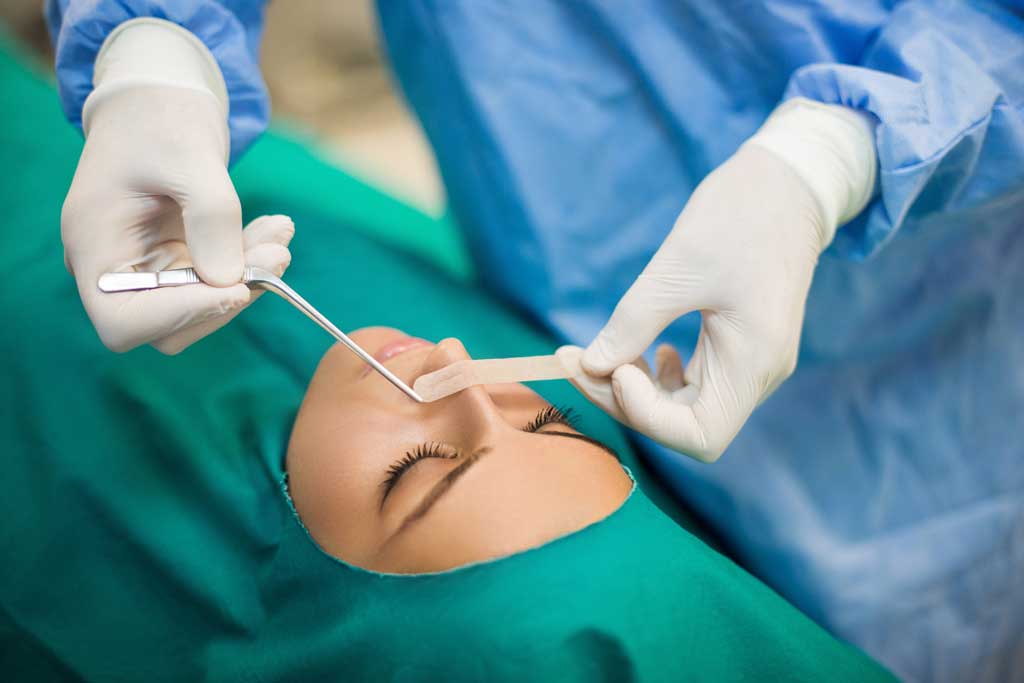Home » LATERA® Implants
LATERA is an absorbable, latex-free nasal implant used to support the upper and lower cartilage inside the lateral wall of the nose. The implant is fully absorbed at about 18 months after the procedure and is replaced by a collagen matrix. Individuals interested in LATERA implants should speak to their otolaryngologist or facial plastic surgeon.

The internal nasal valve is responsible for the largest part of the nasal resistance and is located between the skin and the respiratory epithelium, which is the lining of the respiratory tract that moistens and protects the airways. The external nasal valve consists of the nasal floor, nasal rim and the columella, which is the piece of skin and cartilage that divides the nostrils.
Nasal valve collapse may occur on one or both sides of the nose. If nasal valve collapse has occurred on both sides, individuals are more likely to have a completely blocked nasal airway.


A collapsed nasal valve may cause the following symptoms:
Patients experiencing any of these symptoms should consult their doctor to identify the cause.
More than 20 million Americans have nasal airway obstruction. Because nasal breathing delivers approximately 70% of airflow to the lungs, any blockage that limits airflow can negatively affect an individual’s life.
A clinical study found that LATERA patients experienced:
A LATERA implant may be a suitable option for individuals who have:
Patients should speak to their doctor to find out if LATERA is a good option for them. Important questions to ask a doctor include:
Risks of LATERA include temporary symptoms such as inflammation, awareness of the implant, mild bruising, and mild pain or irritation. Other risks include infection, discomfort, reaction to the material and need to retrieve the device.